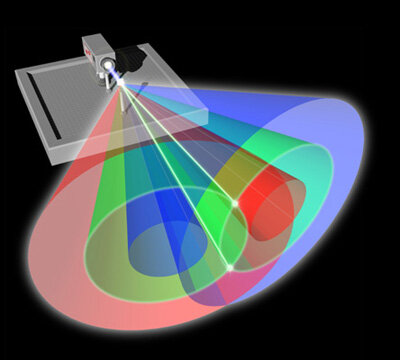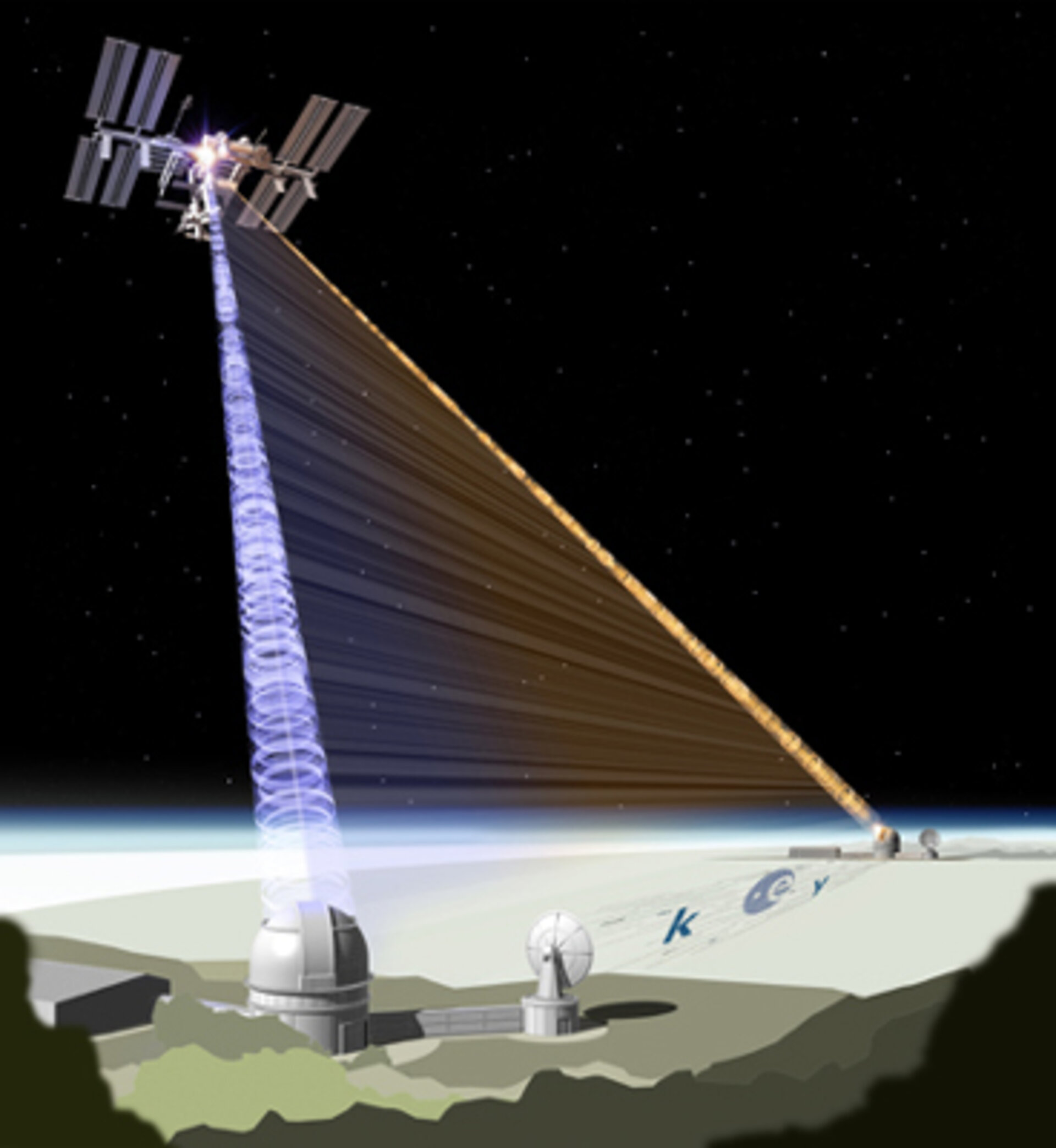ESA explores the quantum world
Today spacecraft communicate with Earth using radios but what about the future?
A new report from ESA’s General Studies Programme suggests that the weird behaviour of nature on its smallest scales may allow spacecraft to send information to Earth with total security and with much higher data compression rates than ever before.
The study also suggests that similar equipment could be used to probe more deeply than ever into the behaviour of matter.
At present, spacecraft send radio wave signals to Earth using antennas. However, the Moon mission SMART-1 is currently testing a system that uses a camera to see laser light from Earth. According to the new study, this is just the first of a great many steps leading towards spacecraft sending densely coded, totally secure messages on beams of light.
“When using a laser, you are using many photons to encode a single piece of information.
The system that the new study proposes would use only a single photon for each bit of data. However, at that level, all the quantum effects appear. Although this seems to be a problem, in fact, we are trying to take advantage of them by defining quantum communications schemes for space applications”, says Josep Perdigues, ESA’s Study Manager.
Quantum effects mean that on nature’s tiniest scales, non-intuitive things happen. For example, a beam of light can behave like an avalanche of particles, known as photons.
Single photons cannot be cloned nor split and by measuring them, you change them from their initial state. So a message sent by a quantum communications system can only ever be read once because as soon as it is read, the original message is automatically scrambled. This means that the receiving station knows instantly if a third party has eavesdropped on the message.
This scheme is called Quantum Key Distribution and can provide absolute security. If such a system were included in a future version of the European navigation system, Galileo, it would instantly show if someone tampers with the signals to and from the satellites.

In addition, a technique called Quantum Dense Coding uses the quantum phenomenon of entanglement to put more than a single piece of information on each photon, increasing the capacity of the communication channel.
Entanglement is one of the most puzzling of quantum properties. If entanglement were possible on everyday scales, imagine having a pair of entangled coins. Give one to a friend and toss your coin. If you obtain a head, then you know instantaneously that when your friend tosses the other coin, it will fall on a tail. You do not have to wait for your friend to perform the experiment and tell you the result.
Understanding exactly how quantum particles are linked like this is difficult and some physicists, notably Einstein, never accepted the idea. He called it “spooky action” and proposed that particles ‘hide’ some of their characteristics from us, which is why they then appear to spontaneously change their known ones.
A quantum communications system in space may help the understanding of entanglement by testing it over much larger distances than possible on Earth.
“We still do not know how well entanglement is preserved over large distances. It has been tested over a few kilometres on the ground but in space we can test it over thousands of kilometres, ideally in vacuum”, says Perdigues.
As an initial step, the idea is to use the International Space Station to distribute pairs of entangled photons through the atmosphere to widely separated ground stations to see if they remain entangled. According to the study, if funding were available, experimental equipment might be ready in the 2011-2012 timeframe.




